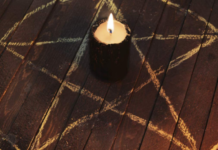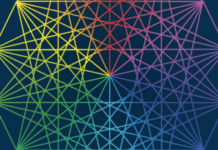Certain directions have always been considered more sacred than others. The altar is placed in the north in Wiccan traditions, or in the centre, facing north.
In Wicca, north is traditionally considered the home of the Gods, and therefore the most sacred direction. It is a reflection of the influence on Wicca by our European ancestors.
The Pole Star in the North was considered especially sacred in the mythology of the German and Norse peoples. North was also the direction of the Spiral Castle of the Celtic Goddess Arianrhod, Caer Arianhrod, where the heroes of the Celts dwelt after death.
North is the direction through which the Sun passes at night at which the Moon’s influence is strongest in relation to the Sun. The North, therefore, represents the deepest part of the unconscious mind.
The difference in the altar orientation of the Wiccan religion between the Christian religion reflects their Dionysian and Apollonian teachings; the religion of the night versus the religion of the day; of unconscious versus conscious.
Regardless of whether one uses the North or the South (those in the Southern hemisphere will often have their altar in the South as at midnight the South Pole Star and the Sun aligns in the South), having the altar on the North/South axis is significant in that it aligns the circle with the Earth’s magnetic currents. Traditionally, this is important in both magick and another important human act: sleeping. In the Northern hemisphere, in order to align the electro-magnetic field of the body with that of the Earth, one must sleep with their head in the North and the feet at the South.
Mediums often sit with their backs to the North when giving clairvoyance; much in the same way a Wiccan priestess will stand with her back to the North when invoking the power of the Goddess into her.








